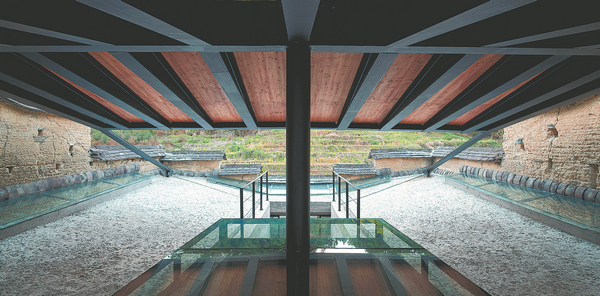Carving out a legacy
By Fang Aiqing | CHINA DAILY | Updated: 2023-11-28 08:06

Architect Hua Li, a practitioner of modern architectural theory and practice, has completed several wooden structure projects over the years and has been reflecting on the potential of the traditional materials and the intellectual legacy widely applied in residential dwellings throughout the country.
Although wooden architecture has certain limits in terms of scale and fire protection and is therefore not in mainstream use, he recognizes wood as being nonpolluting and bringing a feeling of nature, intimacy and warmth.
In 2008, Hua's Trace Architecture Office designed a handicraft paper museum in rural Tengchong, Yunnan province, deep in Gaoligong Mountain.
The contemporary-style design, a complex of small cabins of different sizes and heights, was built simply with traditional beams, columns and sunmao structures, by a group of experienced local carpenters.
"It has extended the usage of traditional woodcraft, as it was seldom applied to an irregular shape," Hua says, adding that this attempt indicates traditional timber-framed structures can be more diversely used and promoted in a wider range of applications.
In 2017, in Taxia village of Nanjing county, Fujian province, Hua led a project that involved renovating five old buildings into a commercial resort, the Tsingpu Tulou Retreat. Three of them were rectangular tulou (earthen buildings) constructed in the late Qing Dynasty (1644-1911).
According to Hua, the challenge was keeping the original wooden structures and earthen walls while upgrading the thermal and sound insulation, lighting, waterproofing and fire protection facilities to meet the need of a high-end hotel room.
























